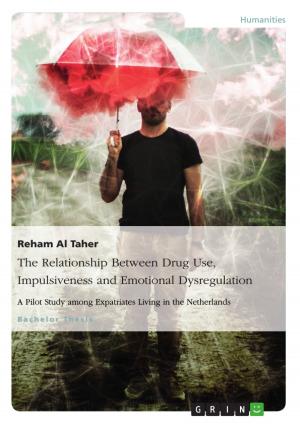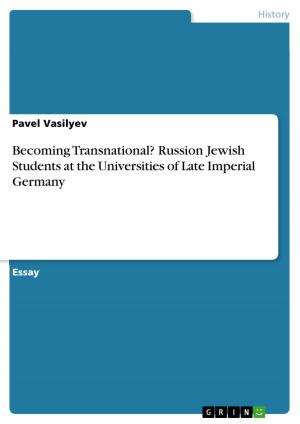| Author: | Martin Weiser | ISBN: | 9783638050234 |
| Publisher: | GRIN Publishing | Publication: | May 20, 2008 |
| Imprint: | GRIN Publishing | Language: | English |
| Author: | Martin Weiser |
| ISBN: | 9783638050234 |
| Publisher: | GRIN Publishing |
| Publication: | May 20, 2008 |
| Imprint: | GRIN Publishing |
| Language: | English |
Essay from the year 2007 in the subject History Europe - Germany - National Socialism, World War II, grade: 1, University of Nottingham, 30 entries in the bibliography, language: English, abstract: The 20th century is sometimes called the 'centrury of genocide'. Never before have people been killing each other on such a scale, with so sophisticated methods and techniques, for so many reasons and seemingly without any scrupules or mercy. Untold masses of humans fell victims to these massacres. From South West Africa and Armenia to Cambodia and Rwanda, there were a number of genocides. A number of genocides, but just one Holocaust. Or, was there just one? Most of the scholarly attention devoted to the subject of Holocaust has, not surprisingly, been focused on the Jewish experience during the Nazi period. The study of the Gypsy experience during the same period has been largely underrepresented in the historiography discussions. Therefore, in this paper I will concentrate on the Porrajmos. The main aim of this work is to find out if and eventually to what extent the Shoah and the Porrajmos are comparable. In the first half I deal with the persecution of the Gypsies solely. I describe the main characteristics of the treatment of the Gypsies by the Nazis as well as mention the main laws and decrees that dealt with the issue. In the second part of this paper my own believes become much more pronounced. I discuss and compare the Nazi treatment of Jews and Gypsies; touch upon the most debated and controversial issues and above all analyze the main differences in the treatment of these two groups. Based on the facts from the first chapter and deriving from the discussion in the second chapter I shall then try to draw conclusions concerning Yehuda Bauer's thesis that 'It does not do any service to the cause of the Romani people to mix them up in the same analytical framework with the Jews by defining the Holocaust as pertaining to both Gypsies and Jews'.
Essay from the year 2007 in the subject History Europe - Germany - National Socialism, World War II, grade: 1, University of Nottingham, 30 entries in the bibliography, language: English, abstract: The 20th century is sometimes called the 'centrury of genocide'. Never before have people been killing each other on such a scale, with so sophisticated methods and techniques, for so many reasons and seemingly without any scrupules or mercy. Untold masses of humans fell victims to these massacres. From South West Africa and Armenia to Cambodia and Rwanda, there were a number of genocides. A number of genocides, but just one Holocaust. Or, was there just one? Most of the scholarly attention devoted to the subject of Holocaust has, not surprisingly, been focused on the Jewish experience during the Nazi period. The study of the Gypsy experience during the same period has been largely underrepresented in the historiography discussions. Therefore, in this paper I will concentrate on the Porrajmos. The main aim of this work is to find out if and eventually to what extent the Shoah and the Porrajmos are comparable. In the first half I deal with the persecution of the Gypsies solely. I describe the main characteristics of the treatment of the Gypsies by the Nazis as well as mention the main laws and decrees that dealt with the issue. In the second part of this paper my own believes become much more pronounced. I discuss and compare the Nazi treatment of Jews and Gypsies; touch upon the most debated and controversial issues and above all analyze the main differences in the treatment of these two groups. Based on the facts from the first chapter and deriving from the discussion in the second chapter I shall then try to draw conclusions concerning Yehuda Bauer's thesis that 'It does not do any service to the cause of the Romani people to mix them up in the same analytical framework with the Jews by defining the Holocaust as pertaining to both Gypsies and Jews'.















